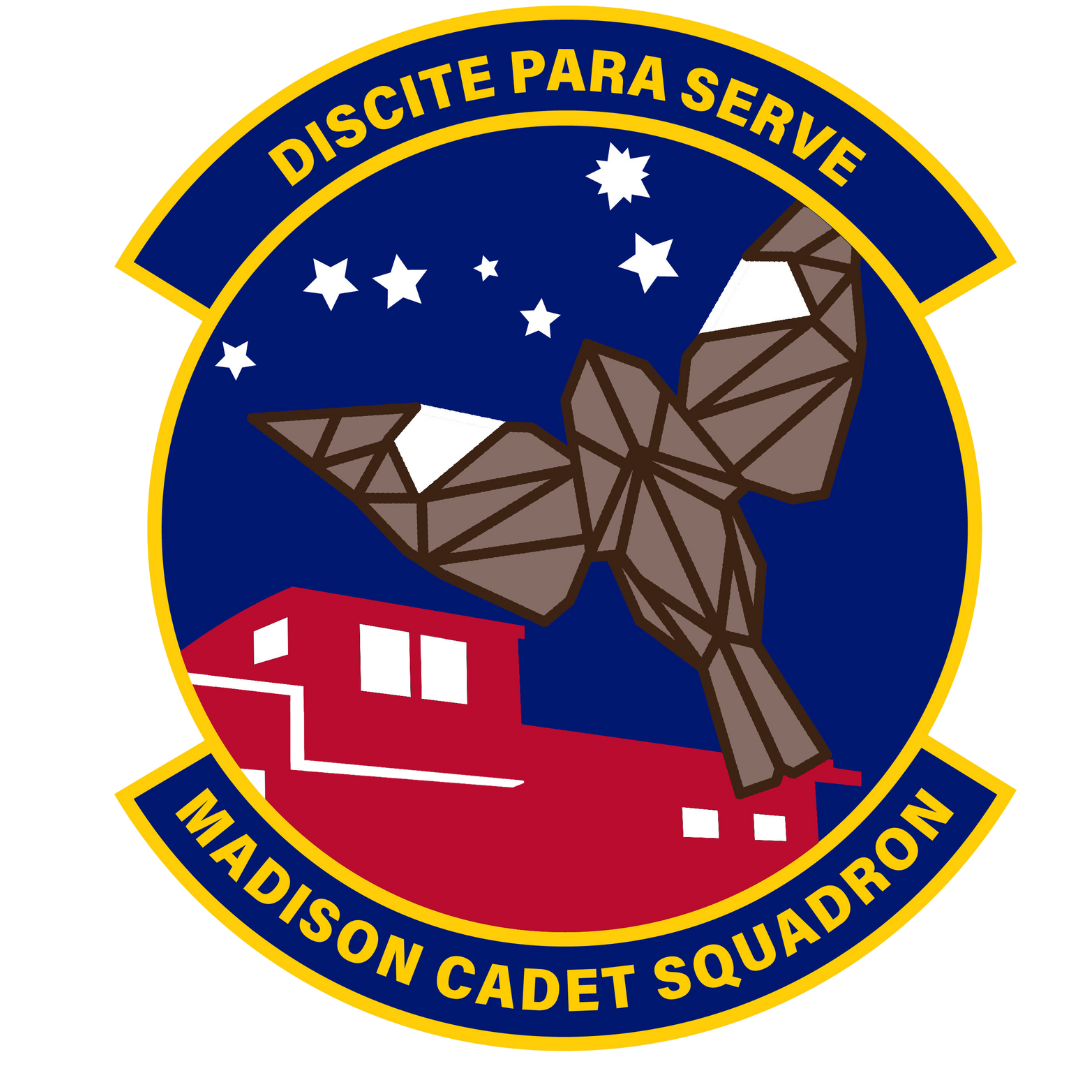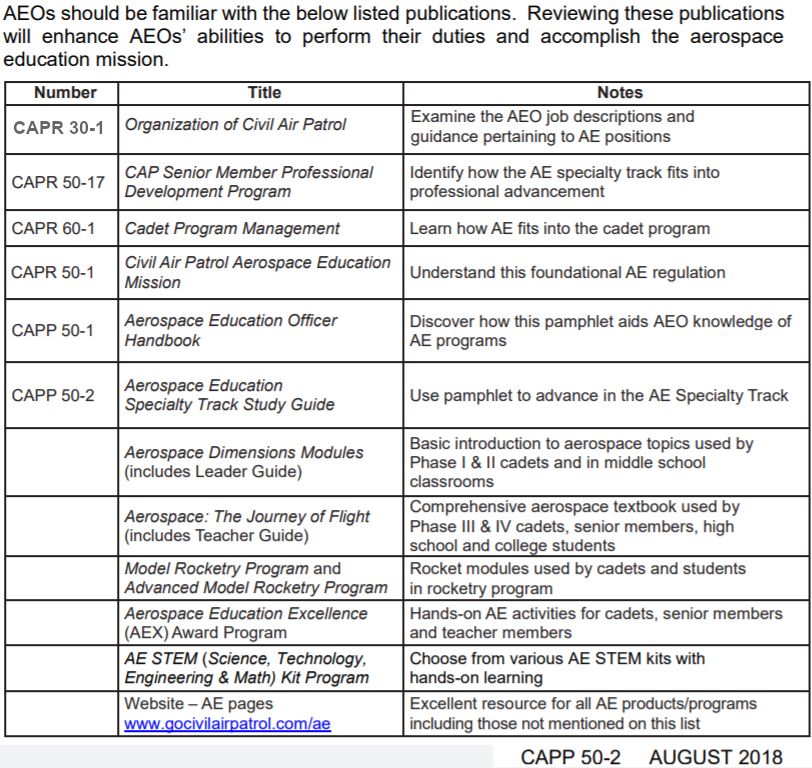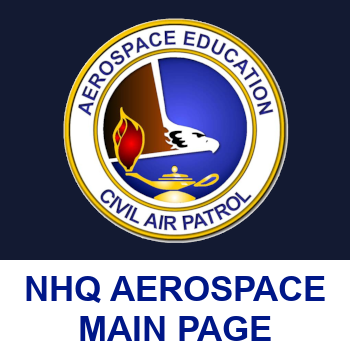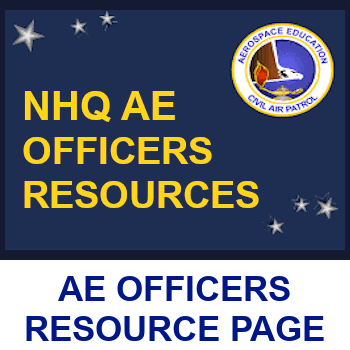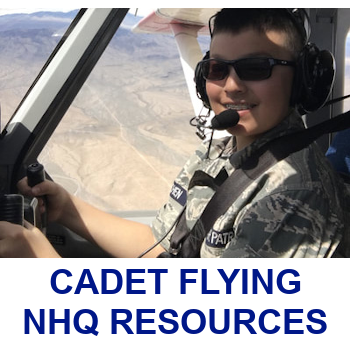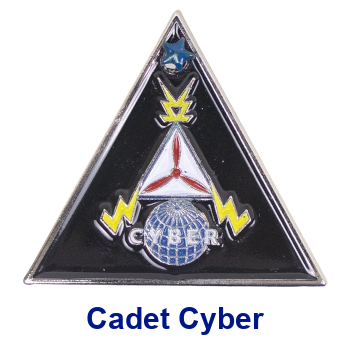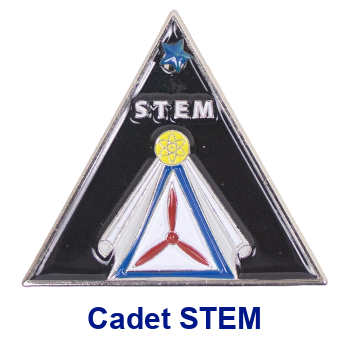Aerospace Education
Aerospace Education (AE) is one of CAP’s Congressionally mandated missions. AE has a broad scope of responsibility that encompasses internal AE training for both Cadet Programs and Senior Members, and external community outreach that includes teaming with educators in classrooms throughout the nation. The AEOs also coordinate Orientation Flights for CAP cadets and JROTC and ROTC cadets.
Title 36, U.S.C. § 40302 defines CAP’s purposes as an organization to encourage and aid citizens of the United States in contributing their efforts, services, and resources in developing aviation and in maintaining air supremacy, to provide aviation education and training, and to promote AE and cyberspace to our members and the general public.
IAW CAPR 50-1, para 2.7. At all levels, AEOs are their commander’s main point of contact and primary resource for accomplishing the AE mission. AEOs work closely with their assistants to ensure that AE is promoted in their units and in their communities. AEOs interact and coordinate with other AEOs at the organizational level above and below them to ensure that the AE mission is being accomplished. AEO responsibilities are listed in Attachment 4 of this regulation and in CAPR 20-1(I), Organization of Civil Air Patrol.
IAW CAPR 30-1, Organization of Civil Air Patrol, unit AEOs report to and coordinate AE training with both the Deputy Commander for Seniors and Deputy Commander for Cadets.
AE REGULATIONS, TRAINING, AND GUIDANCE
All publications listed on this page are available in the CAP NHQ Publication Library.
Click the link below, use the left menu to select the link that corresponds with the publication you are seeking.
i.e. Regulations and Manuals (CAPR / CAPM); Pamphlets (CAPP); Standards (CAPS); and Forms (CAPF)
Important Publications For Aerospace Education
NHQ AE PAGES
NOTE: Make sure to view the resources, Regional AE Plan of Action (POA), and report requirements in eServices.
Log into eServices. Click on the left-side menu and utilize the links under Aerospace Education.
CADET PROGRAMS MISSION - AEROSPACE EDUCATION ELEMENT
Aerospace Education is one of the five required program elements of Cadet Programs and includes the areas of STEM and Cyber. The academic program for cadets is built around a 2-year cycle. Phase I and II cadets are instructed utilizing the "Aerospace Dimensions" material. As the cycle repeats, Phase III and IV cadets are instructed utilizing the "Aerospace: Journey Of Flight" that builds upon and compliments the "Aerospace Dimensions" program and provides both a deeper understanding of the AE material and leadership opportunities for senior cadets to assist in AE instruction for junior cadets.
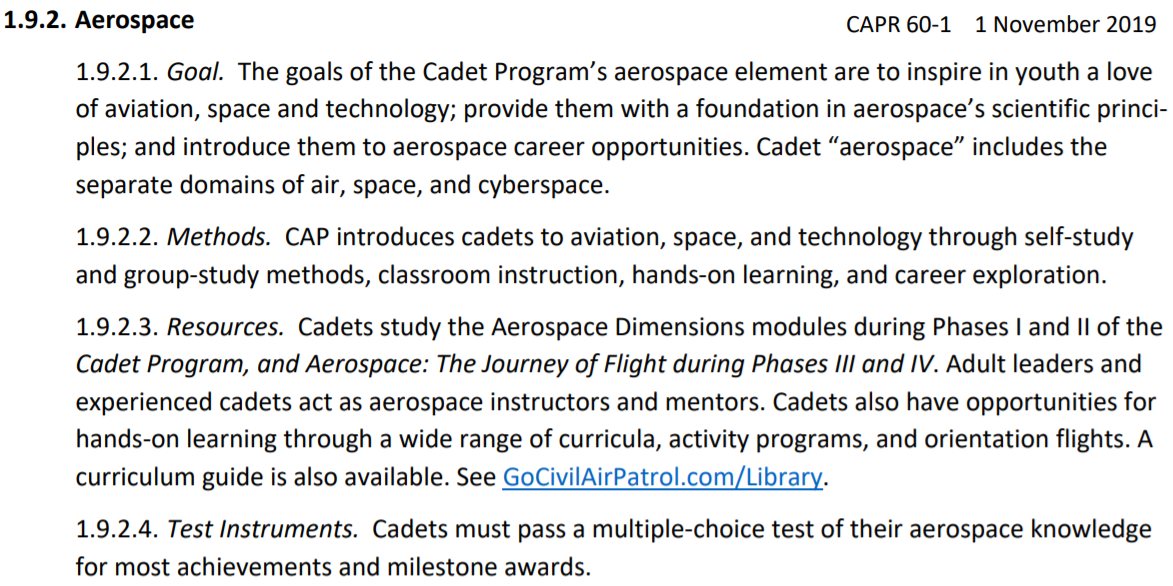
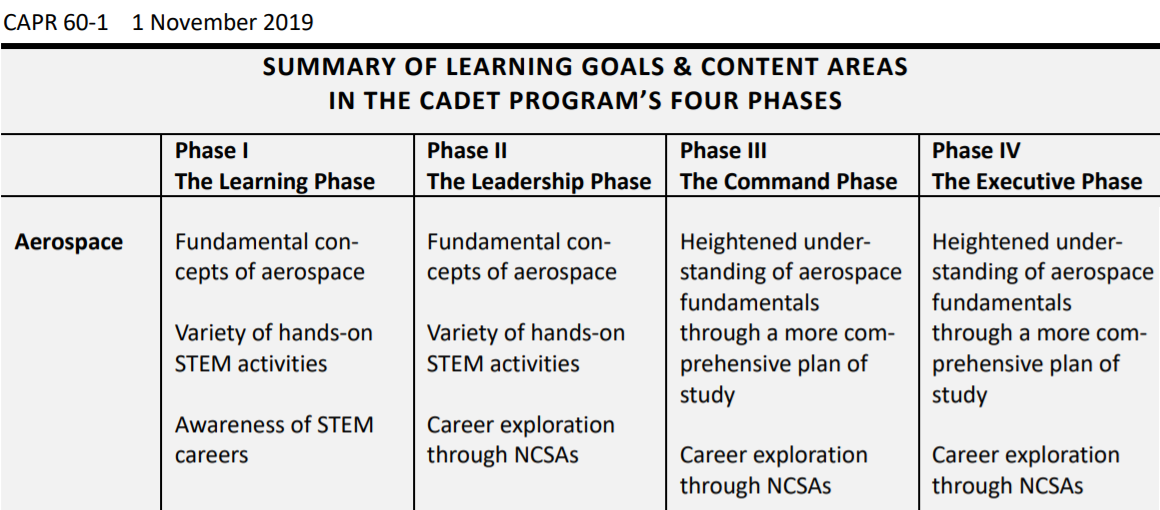
CADET PROGRAMS AE POSITION DESCRIPTION
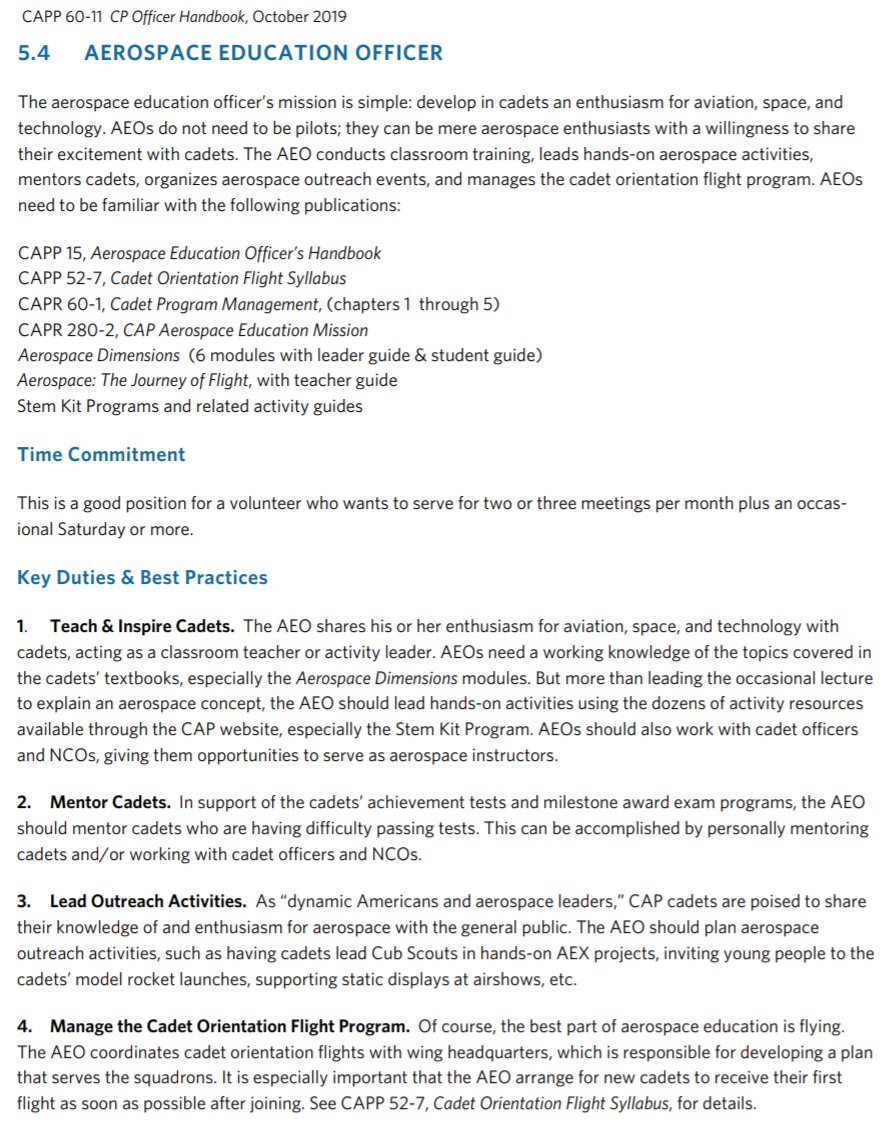
LEADER GUIDE FOR AEROSPACE DIMENSIONS
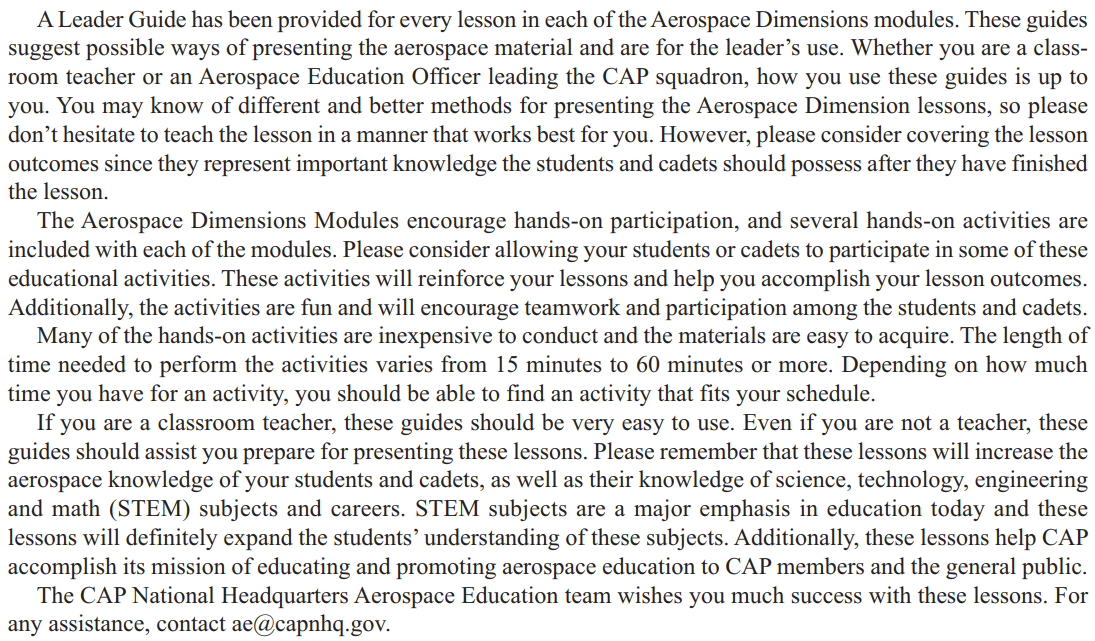
LEADER GUIDE FOR AEROSPACE: JOURNEY OF FLIGHT
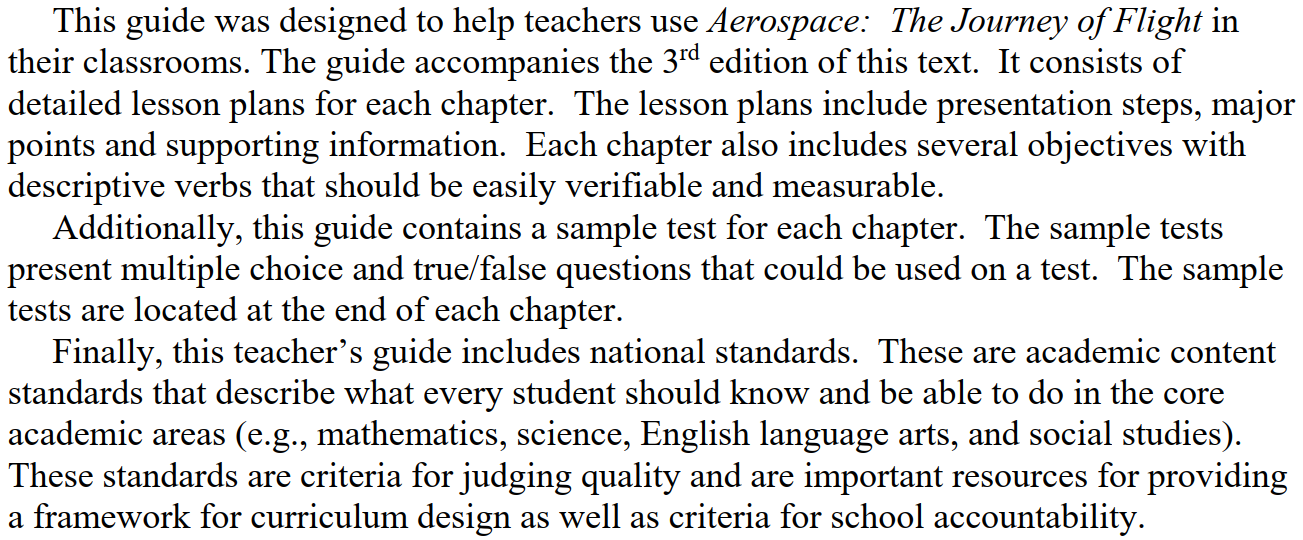
CADET ORIENTATION FLIGHT PROGRAM GUIDANCE
STEM KITS AND PLANNING
On 8 Mar 2019, NHQ STEM Program Manager sent out an email outlining the new procedures regarding ordering of STEM Kits. Beginning June 2019, from 1 June through 31 Aug of each year, the STEM Kit program office will be closed. "This 'downtime' will be used for program management to include: editing the application and evaluation processes, developing new lesson plans, revising kits, and researching new kits [and] for analyzing and evaluating program metrics to further improve the program." During this "down time," STEM Kits will not be able to be ordered. 1 Sep of each year will re-open the application period and will include both previously available and new kits.
The program office closure does not affect the use of STEM Kits already in the possession of AEOs and their units and/or organizations they are working with. There are no deadlines or penalties associated with the STEM Kit program. However, AEOs must ensure and document no less than six (6) contact hours utilizing the kit with as many cadets participating as possible, then submit the pre-and post-tests and evaluations before the unit can qualify to apply for a new kit.
In regards to Cadet Programs, in relation to qualifications for the Quality Cadet Unit Award, a minimum of one STEM Kit should be completed annually by a Cadet Unit, with a cut-off date for qualification being 31 August.
For more information on how to apply for STEM Kits and the Implementation Process, visit the STEM KIT PROGRAM PROCESS page.
Introducing the Cadet Cyber Badge and Cadet STEM Badge. These new recognition programs will motivate cadets to participate in activities like Cyber Patriot, robotics, astronomy, meteorology, drones / UAVs, flight simulators, and more.
For years, the Cadet Model Rocketry Badge has given cadets an incentive to learn about the science behind rockets. For tens of thousands of cadets, the badge motivated them to explore a subject that they might not have given a try were it not for the badge. Now, that same principle is at work for our cyber defense activities and several STEM-related subject areas.





